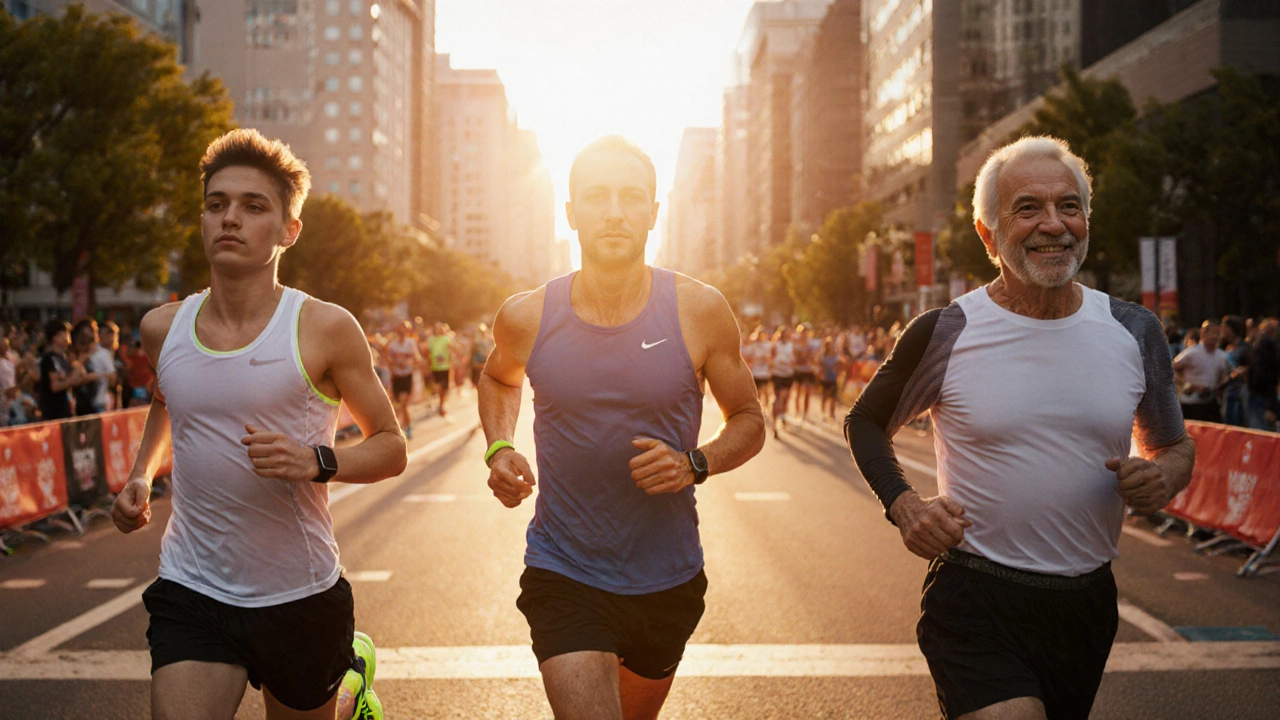
Marathon Age: When to Start, Peak, and Recover
When thinking about marathon age, the typical age range when runners begin serious marathon training, hit their performance peak, and finish strong. Also known as optimal marathon age, it guides you in setting realistic goals and avoiding common age‑related pitfalls. Marathon training, a structured program of mileage buildup, speed work, and long runs designed for endurance athletes marathon prep Running performance, how fast and efficiently a runner can cover distance, influenced by VO2 max, biomechanics, and recovery habits race speed are both shaped by age. Younger runners often enjoy quicker recovery, while seasoned athletes bring experience and steady pacing. Understanding these connections lets you tailor mileage, cross‑training, and nutrition to the phase of life you’re in.
How Age Influences Training Load and Injury Risk
Age‑related fitness is a key factor that marathon age hinges on. As you move from your teens into your 30s, muscle strength and joint resilience generally improve, making it easier to handle higher weekly mileage. Once you cross the mid‑30s, recovery time tends to lengthen and the risk of overuse injuries rises. That means the same 70‑mile week that felt fine at 28 might trigger shin splints at 38. Adjusting training load based on these physiological changes is essential; many coaches recommend a 10‑15% reduction in peak mileage after the age of 40 while preserving intensity through interval work.
Another semantic link: marathon age influences injury prevention strategies. Older runners benefit from strength‑training routines that target hips, core, and calves, reducing the strain on knees and ankles during long runs. Incorporating low‑impact cross‑training like swimming or cycling can maintain cardio fitness without the pounding. This blend of age‑adjusted training and proactive injury prevention helps athletes stay on the road longer and finish races stronger.
Recovery after a marathon also shifts with age. Within the first 48 hours, the body experiences muscle fiber damage, depleted glycogen stores, and inflammation. Younger runners often bounce back faster, while older athletes may need extra protein, stretching, and active recovery sessions to clear lactate and rebuild tissue. Simple measures—hydration, balanced meals, and gentle yoga—can speed up the repair process for anyone, but they become especially critical after the age of 45.
Finally, consider the psychological side of marathon age. Goal setting evolves; early in a running career, the focus might be on finishing time, while later runners often prioritize consistency, injury‑free training, and the joy of the sport. Aligning your mental approach with the physical realities of your age creates a sustainable marathon journey that can span decades.
Below you’ll find articles that dive deeper into each of these topics—training plans for seniors, recovery tricks for post‑marathon soreness, nutrition tweaks for different life stages, and more. Use this guide to pinpoint your personal marathon age window and apply the right strategies for a successful, injury‑smart running life.
